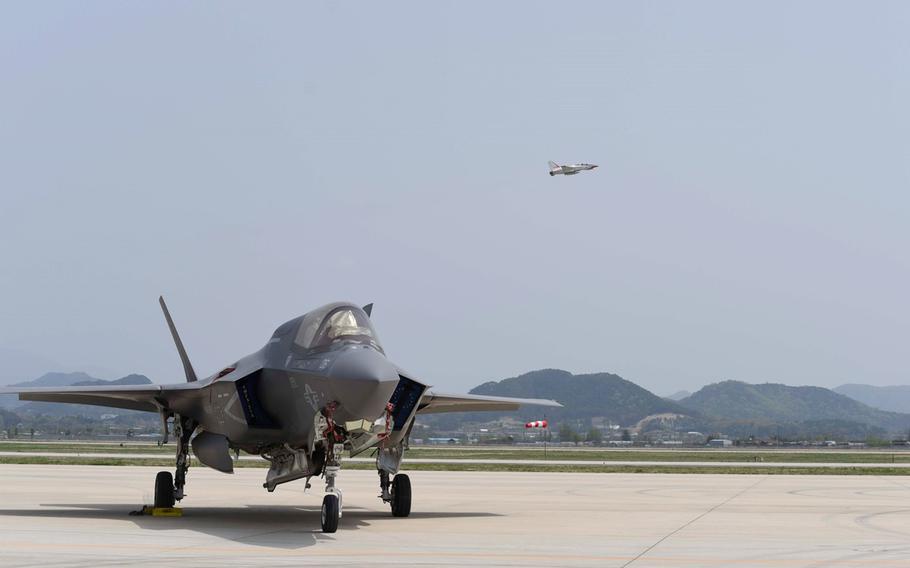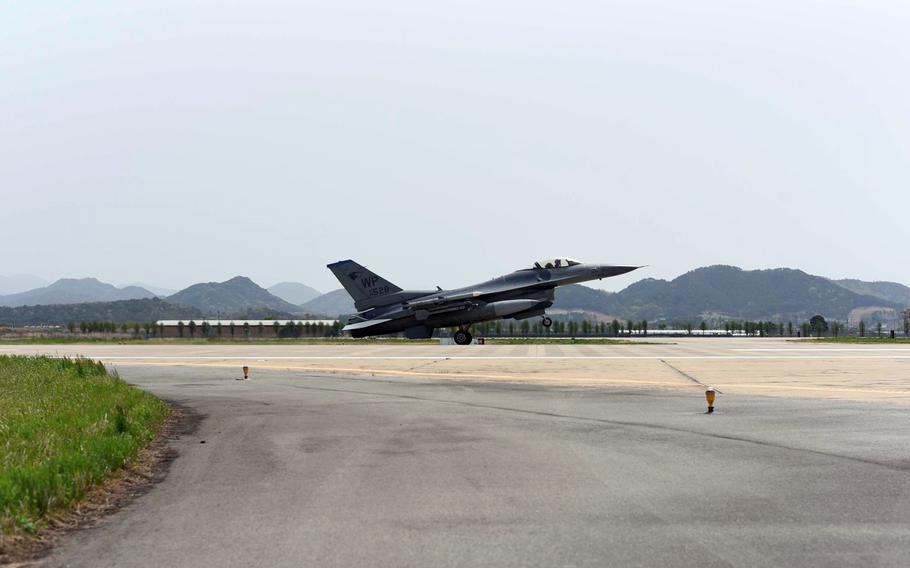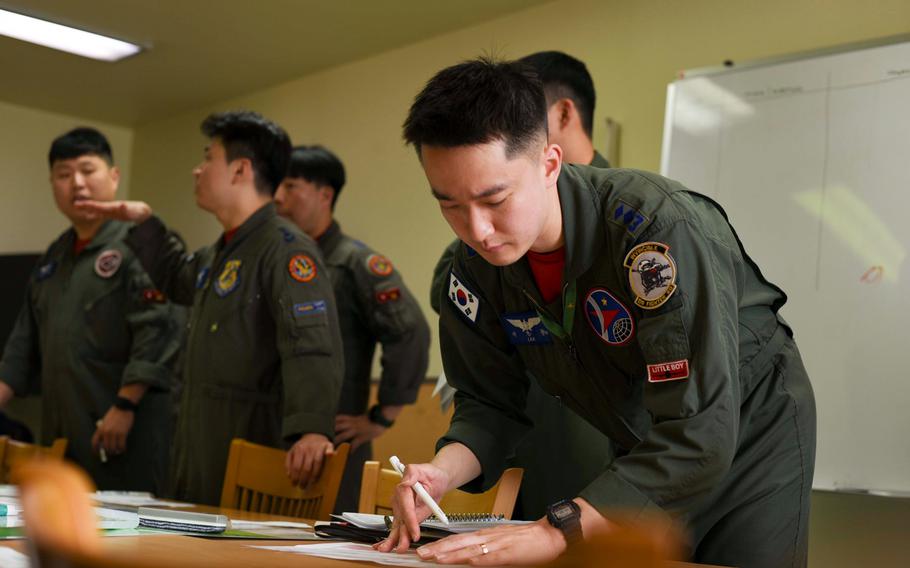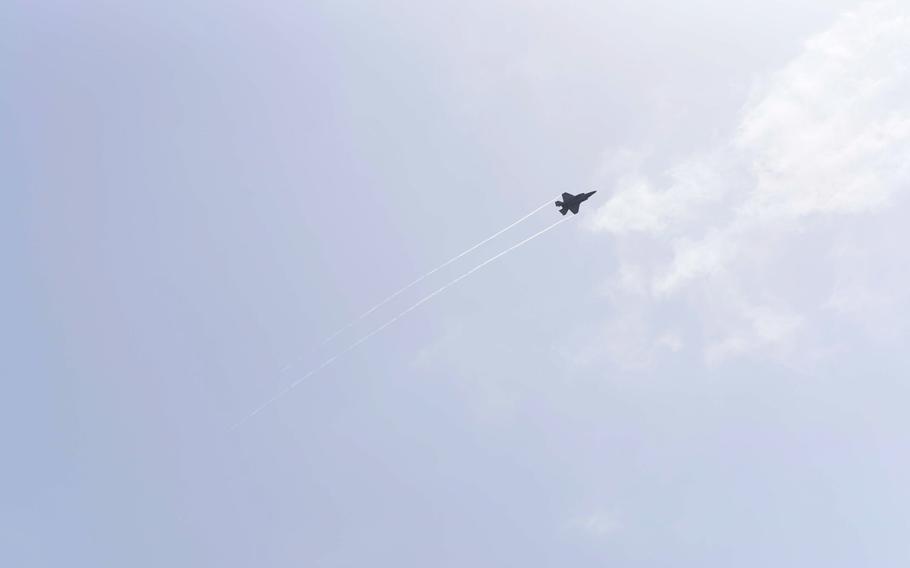
A U.S. Air Force F-35A Lightning II stands ready on the flight line as another jet flies over Gwangju Air Base, South Korea, April 18, 2025, during the Freedom Flag exercise. (Trevares Johnson/Stars and Stripes)
The U.S. and South Korean air forces last week began a large-scale air power exercise designed to simulate realistic, tactical warfare.
In the second Freedom Flag exercise — the first took place in the fall — fifth-generation F-35 Lightning II multirole stealth fighters are playing the opposition, the 7th Air Force said in a news release Thursday. The exercise takes place from this South Korean air base about 190 miles south of Seoul.
Stealthy U.S. F-35Bs — capable of short takeoffs and vertical landings — and South Korean F-35As will fly as “red air” forces against fourth generation craft like the U.S. F-16 Fighting Falcon and South Korea’s F-15K, the 7th Air Force said.
“We expect the exercise to strengthen teamwork and improve interoperability between the U.S. and [South Korea] by allowing pilots from both countries to share practical missions to learn new tactics and focus on live fire in the modern battlefield environment,” KF-16 pilot Lee Jong-won said in the release.

A U.S. Air Force F-16 Fighting Falcon takes off from Gwangju Air Base, South Korea, April 18, 2025, during the Freedom Flag exercise. (Trevares Johnson/Stars and Stripes)
Interoperability is a term the military uses to describe the ability of one country’s armed forces to use another country’s training methods and military equipment.
Freedom Flag, a relatively new, biannual event, tests the countries’ ability to operate as a unified force by simulating a wartime airpower deployment, according to 7th Air Force. The exercise concludes May 2.
“Over the next two weeks, we will be engaging in high intensity, realistic tactical large force exercise training that mirrors some of the most challenging, modern threats we could face in combat today,” Lt. Col. Jonathan Dietz, exercise division chief of the 7th Air Force operations directorate, said in the release.
Training together for each mission with South Korean allies secures “our combined, advanced capabilities,” he added.

South Korean airmen discuss Freedom Flag, annual aerial drills with the U.S. Air Force, at Gwangju Air Base, South Korea, April 18, 2025. (Trevares Johnson/Stars and Stripes)
Along with the F-35s, more than 90 aircraft assembled from around the country. They include U.S. F-16 Fighting Falcons, KC-135 Stratotankers, and South Korean KF-16 fighters and CN-235 airlifters. Approximately 1,700 personnel are participating.
This exercise also includes a significantly expanded role for unmanned aerial vehicles, or UAVs.
UAVs “will participate in all types of aerial exercises, including air interdiction, defensive counterair and complex missions like dynamic targeting, combat search and rescue, and close air support,” according to 7th Air Force.
The goal of Freedom Flag is to conduct missions that reflect the evolving operational demands of modern warfare, the command said. The next iteration of the exercise is scheduled for the fall.

A U.S. Air Force F-16 Fighting Falcon maneuvers above Gwangju Air Base, South Korea, April 18, 2025, during the Freedom Flag exercise. (Trevares Johnson/Stars and Stripes)